June 19, 2025 | 09:21 GMT +7
June 19, 2025 | 09:21 GMT +7
Hotline: 0913.378.918
June 19, 2025 | 09:21 GMT +7
Hotline: 0913.378.918
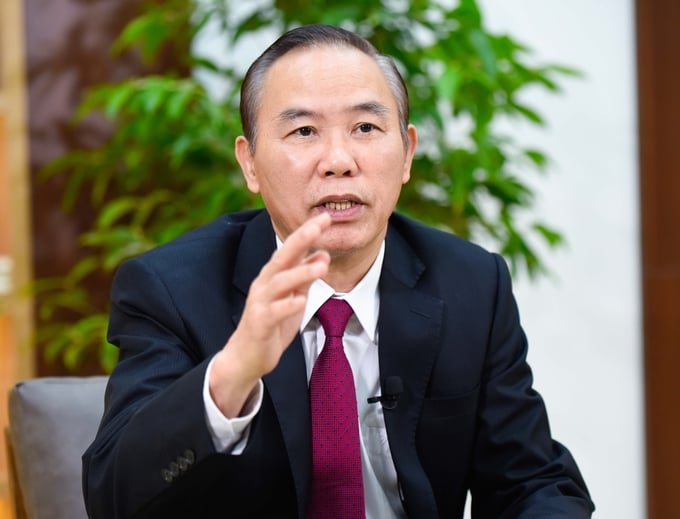
Deputy Minister Phung Duc Tien and the solution of building a mariculture ecosystem. Photo: Pham Huy.
In preparation for the upcoming "Sustainable Mariculture Development Conference - Insights from Quang Ninh" on April 1, Deputy Minister of the Ministry of Agriculture and Rural Development Phung Duc Tien and Vietnam Agriculture Newspaper discussed the strategy and fundamental solutions to elevate mariculture into a high-value and sustainable economic sector.
Deputy Minister Phung Duc Tien shared: With a coastline extending over 3,260 kilometers, a marine area spanning over 1 million square kilometers, and over 3,000 islands of various sizes, the Central Executive Committee issued Resolution 36 - NQ/TW to establish a sustainable development strategy for Vietnam's maritime economy until 2030, with a vision towards 2045.
A major focus within the Resolution is the development of mariculture, and the transition from traditional aquaculture and fisheries exploitation to industrial practices, supported by advanced technologies. Accordingly, this strategy involves restructuring fisheries exploitation activities, with a focus on reducing nearshore exploitation and promoting offshore and oceanic exploitation based on the recovery capacity of each coastal region and ecosystem. Furthermore, the strategy promotes effective training and vocational conversion for fishermen.
To implement this resolution, the Ministry of Agriculture and Rural Development has developed a Mariculture Project, which was approved by the Prime Minister in 2021. The project's overarching goal is to utilize marine advantages, establish a comprehensive and modern mariculture industry, adopt advanced technologies, and facilitate origin traceability by utilizing digital transformation in association with emission reduction. Additionally, a sustainable mariculture industry contributes to the implementation of Resolution No. 19 on developing an ecological agriculture, modern rural areas, and civilized farmers.
"Mariculture is an inevitable trend, a development strategy aimed at utilizing a nation's advantages. With favorable natural conditions, diverse marine species including fish, seaweed, mollusk, etc., high-quality and highly ecological regions, and generations of mariculture experience, we have the opportunity to create a highly valuable economic sector with a strategic approach and solutions to unlock mariculture potential," Deputy Minister Phung Duc Tien affirmed.
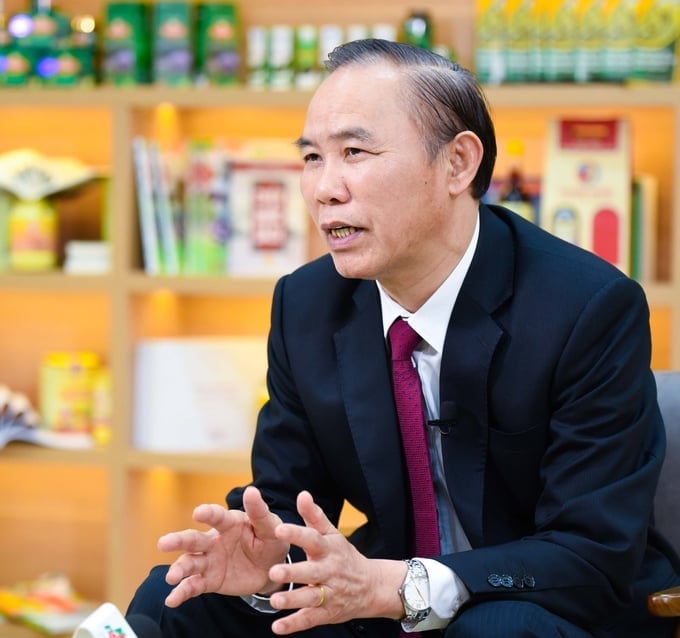
Mariculture and aquaculture as a whole will reach a regional and global scale in the near future. Photo: Pham Huy.
Based on the analysis of potential factors, advantages, technology application, digital transformation, Deputy Minister Phung Duc Tien believes that mariculture and aquaculture in Vietnam will soon reach a reach regional and global scale in the near future.
"In the future, if we utilize at least 500,000 square kilometers out of the total 1 million square kilometers of marine area, we surpass the targeted yield of 1.45 million tons as outlined in the Mariculture Project, and potentially doubling this figure. In addition to the 5 million tons of inland aquaculture yield, and 2.8 million tons of fishing yield, we will have approximately over 10 million tons of seafood. Subsequently, the export value of Vietnamese seafood will exceed the current levels of 10 to 11 billion dollars by a large margin. For example, we previously set a targeted seafood yield of 850,000 tons by the end of 2025; however, we already achieved 800,000 tons by 2023. If this trend continues in 2024, we can the reach 850,000 tons milestone, and perhaps even more.
This means that we will reach the finish line one year in advance, and more importantly, the result confirms that our strategy and solutions for mariculture and aquaculture as a whole are heading in the right direction. In addition to economic targets, we must also consider social and environmental aspects," Deputy Minister Phung Duc Tien stated.
The potential and advantages of Vietnam's mariculture have been clearly analyzed and identified. However, as the Vietnam Agriculture Newspaper has reflected in a series of articles titled "one mariculture license, six ministries", it is evident that investment in mariculture is limited by various barriers and obstacles. What do you consider as the bottlenecks and limitations of mariculture today?
I believe that in terms of policies and relevant laws related to mariculture, we currently have relatively comprehensive regulations. We have the 2017 Law on Fisheries, along with 2 Decrees, and 8 Circulars regarding the legal requirements for mariculture and aquaculture as a whole.
We are currently waiting for the National Marine Spatial Planning for the years between 2021 and 2030, with a vision towards 2045. When the National Assembly passes this planning, we will have a foundation to allocate marine areas to farmers. This is an extremely important issue. According to the Law on Sea and Islands, the allocation of marine areas is treated the same as the allocation of land areas, which includes the right to mortgage and the right to acquire bank loans.
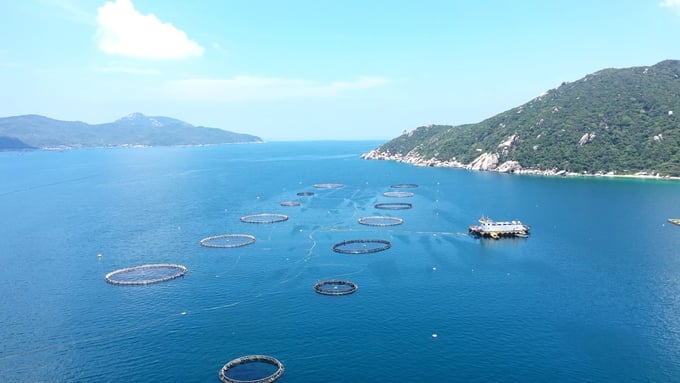
Vietnam's scientific and technological proficiency in mariculture is relatively low. Photo: Duy Hoc.
However, in reality, we have to seek approval from six different ministries to allocate marine areas, which is exacerbated by inconvenient administrative procedures.
Additionally, the Ministry of Agriculture and Rural Development is leading the amendment of Decree 67 on fisheries development policies to submit to the Government for approval. Accordingly, the amended contents include support and investment policies for mariculture. The current challenge facing our mariculture industry, in my opinion, lies in investment resources. Namely, investment in infrastructure, equipment, human resource training, research on seeds, feed processing, biosafety, etc. There are five main existing limitations and challenges that need to be addressed urgently.
Firstly, our current mariculture-serving infrastructure is inadequate, and unable to meet the demands for mariculture development.
Secondly, our scientific and technological proficiency in mariculture is still relatively low. This is evidenced by the fact that the majority of our fish, seaweed, and mollusk seeds have unidentified origins; some are even smuggled, or have not been thoroughly researched or selectively bred. Despite the indispensable role of seeds in determining productivity and quality, investment resources for seed research are still very limited.
Thirdly, nutritious feed for mariculture is crucial for the competitiveness of the mariculture industry, yet in reality, there is still not enough mariculture feed production to meet demand. The majority of feed is processed from chopped fish and mollusks, leading to adverse effects, ecological imbalance and environmental impact. Furthermore, they directly affect the quality and productivity of fishery activities.
Fourthly, the issue of biosafety, in mariculture as well as aquaculture as a whole, has not received adequate attention.
Fifthly, mariculture practices, which primarily consist of using cages manually crafted from rudimentary materials such as bamboo or wood, are still prevalent.
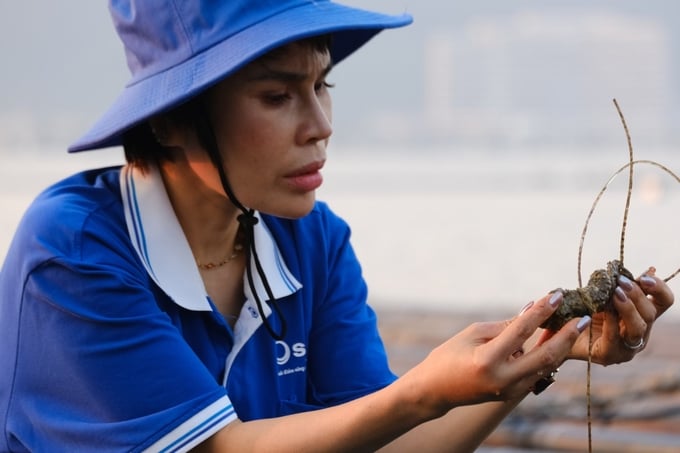
The province must create a favorable environment to encourage businesses to invest in mariculture. Photo: Kien Trung.
Some businesses have invested in mariculture on an industrial scale, such as Australis Vietnam Aquaculture Company, which farms Barramundi in Van Phong Bay, Khanh Hoa province, Tran Phu Import Export Services Trading Company Limited, which farms fish on Phu Quoc Island, Kien Giang province, and Truong Phat Group, which farms oysters and seaweed in Quang Ninh province.
However, local equipment-based models are not popular, and compared to advanced mariculture methods worldwide, ours feature a moderate level of modernization. Consequently, despite the importance of our mariculture practices, they have not been systematically modernized.
What do you think are the key solutions to address these bottlenecks and barriers?
The first solution is to create a favorable investment environment to encourage businesses to invest in mariculture. One of our consistent viewpoints over the years has been to focus on administrative reform and create a favorable environment to attract businesses with sufficient financial and technological capacity to invest. With the support of pioneering businesses, cooperatives and farmers, we will build value chains to gradually form a mariculture ecosystem for further replication.
Secondly, solutions regarding policies and investment should be implemented to meet the practical requirements of marine spatial planning and other critical issues, such as: Developing and applying advanced scientific and technological solutions for mariculture; Developing a comprehensive infrastructure system to serve mariculture; Investing in research and production of seeds, feed, processing, and deep processing for mariculture; Training and developing human resources to meet industrial-scale mariculture needs. These solutions will help address the development of mariculture in a comprehensive and effective manner, thereyby ensuring its sustainability.
In the process of amending Decree No. 67 and based on the modern-scale mariculture models of Australis, Truong Phat, and Tran Phu, the Ministry of Agriculture and Rural Development requested De Heus Vietnam to export the option of investing in building feed factories in Kien Giang, Khanh Hoa, Hai Phong, and Quang Ninh to support major mariculture centers planned by the Government. Investors have been proactive and ambitious in recognizing the potential and advantages of mariculture in Vietnam.
Following the request by the Ministry of Agriculture and Rural Development and local governments, De Heus Vietnam is currently conducting a study on over 2,000 hectares of mariculture area in Quang Ninh province. Our solution is to promote collaboration between leading businesses, cooperatives, and farmers to form value chains and build closed-loop mariculture models, which will include seed and feed production, farming practices, disease prevention measures, and strategies to process and export.
These are models that are currently popular in Europe and countries with advanced mariculture technologies. We believe that when the issue of policy is addressed, our strategy will be a success with the support of management agencies, local governments, business communities, cooperatives, and farmers.

Our solution is to have encourage businesses to invest in mariculture. Photo: Pham Huy.
Vietnam's goal is to develop a modern industrial mariculture industry that meets international standards. However, restructuring the industry and resolving conflicts and issues arising from small-scale and spontaneous production is challenging. How will the Ministry of Agriculture and Rural Development accompany the local governments and communities in building a high-value, sustainable mariculture industry?
Vietnam aims to have at least 280,000 hectares of mariculture areas by 2025, with a cage volume of 10 million cubic meters and a production output of 850,000 tons. By 2030, the goal is to reach 300,000 hectares of mariculture areas, 12 million cubic meters of cage volume, and 1,450,000 tons of output, with an export value of 1.8 to 2 billion USD. Vietnam's mariculture industry is projected to be highly advanced by 2045, reinforced by modern management practices. Mariculture will become a significant contributor of the fisheries sector, accounting for over 25% of the total output and achieving an export value of 4 billion USD.
At the moment, our mariculture industry is largely characterized by small-scale and spontaneous production. However, I believe that when the National Marine Spatial Planning for the years between 2021 and 2030, with a vision towards 2045 is approved, we will have a clear and detailed strategy for mariculture development.
The Ministry of Agriculture and Rural Development, in cooperation with relevant agencies and local governments, will clearly define regulations for mariculture in coastal, inland, and offshore areas. Additionally, detailed plans will be formulated for different species and their respective mariculture areas.
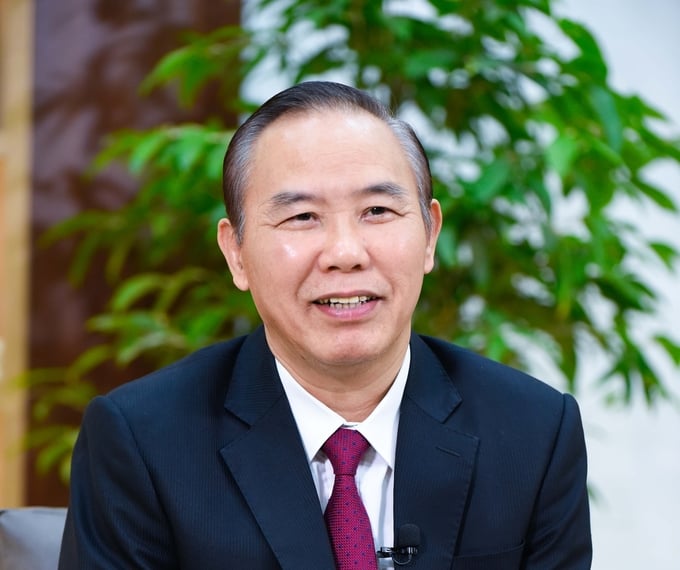
Deputy Minister Phung Duc Tien: Vietnam's mariculture will develop in an industrial manner by embracing modern technology and integration into value chains. Photo: Pham Huy.
Additionally, we must coordinate the interests between mariculture and other sectors, as well as between businesses, people, and cooperatives. The current fleet of over 86,800 active fishing vessels will be gradually downsized according to the roadmap to reduce fishing pressure. Consequently, the solution to transition from fishing to aquaculture, with a focus on securing livelihoods for fishermen, will be implemented in accordance with the Prime Minister's directive to coordinate benefits and risks, thereby fostering the development of a new sustainable mariculture ecosystem.
From the perspective of mariculture and other economic and social sectors, conflicts are inevitable. However, marine spatial planning in combination with region planning will allow the provincial planning and the 4 national master plans to develop consistently in the long term.
Mariculture has been identified as the nation's strength in the international integration process. As a result, I believe that local governments must cooperatively build the mariculture industry, and fully exploit Vietnam's immense advantages and potential for mariculture to achieve economic, social welfare, and sustainable development goals.
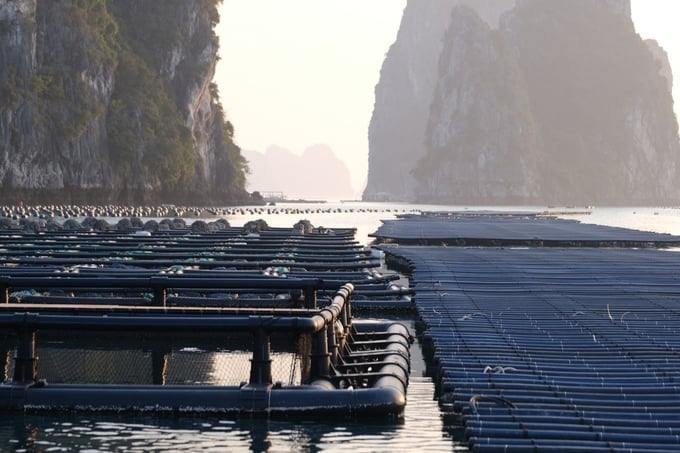
Appropriate investment policies tailored to the province's potential and advantages will generate resources for the development of mariculture. Photo: Kien Trung.
The Ministry of Agriculture and Rural Development commits to directing,and accompanying units within the Ministry, sectors, and local governments in implementing marine spatial planning, sectoral planning, regional planning, and socio-economic planning to fully utilize the national advantages in mariculture and the maritime economy as a whole.
Detailed plannings and programs will include the allocation of mariculture areas, target species for mariculture, and adjustments to meet market demands. These details will be outlined by the Ministry of Agriculture and Rural Development, the Ministry of Natural Resources and Environment, Ministry of Finance, Ministry of Foreign Affairs, and other relevant ministries and sectors, immediately after the national marine spatial planning is approved.
What are your expectations for the future of Vietnam's mariculture industry?
I have thoroughly studied the lessons of mariculture worldwide. For example, in Norway, they only manage a total of 49 marine farms; however, according to statistics, they supply up to 47 million servings of salmon on a daily basis, resulting in significant economic value from the mariculture industry.
Regarding Vietnam, despite the difficulties and barriers as I have analyzed above, we have achieved positive results and exceeded the set targets during the early phases between 2021 and 2025, with an annual seafood growth of 10%, and various other advantages and potential.
Appropriate investment policies tailored to the province's potential and advantages will generate resources for the development of mariculture. I firmly believe that in the future, Vietnam's mariculture will move towards industrialization, with modern technologies integrated into the value chain. Subsequently, Vietnam's mariculture industry will be able to compete with other countries in the region, and eventually with countries equipped with advanced mariculture technologies such as Norway and Denmark.
The Ministry of Agriculture and Rural Development and Quang Ninh province will organize the "Sustainable Mariculture Development Conference - Insights from Quang Ninh" on April 1. The conference is chaired by Minister of Agriculture and Rural Development Le Minh Hoan and the Secretary of the Provincial Party Committee and Chairman of the Provincial People's Council of Quang Ninh province Nguyen Xuan Ky. The conference is expected to attract 400 to 450 domestic and international participants.
The event will be broadcast live by the Vietnam Agriculture Newspaper on multiple media platforms.
You can participate in the conference via Zoom ID: 939 8269 4473; Password: 202404.
Translated by Nguyen Hai Long
![Turning wind and rain into action: [9] Digitizing hydrometeorological data in response to climate change](https://t.ex-cdn.com/nongnghiepmoitruong.vn/608w/files/news/2025/06/17/z6704423696987_15fd32ffc26d590d204d520c9dac6786-nongnghiep-165943.jpg)
(VAN) Farmers have begun accessing hydrometeorological applications to adjust their cropping schedules, aiming to ensure productivity and adapt to climate change.
![Turning wind and rain into action: [8] Real-time salinity detection and early warning technology](https://t.ex-cdn.com/nongnghiepmoitruong.vn/608w/files/news/2025/06/17/z6704423696987_15fd32ffc26d590d204d520c9dac6786-nongnghiep-151127.jpg)
(VAN) Thanks to the integration of modern hydrological-hydraulic models, remote sensing technologies, and artificial intelligence, the accuracy of hydrological forecasting has significantly improved.
![Turning wind and rain into action: [7] Early disaster warnings help marine farmers minimize losses](https://t.ex-cdn.com/nongnghiepmoitruong.vn/608w/files/news/2025/06/17/z6704423696987_15fd32ffc26d590d204d520c9dac6786-nongnghiep-142942.jpg)
(VAN) In recent years, thanks to early disaster warnings and forecasting, marine farmers in Khanh Hoa province have been able to reduce risks and losses, thereby improving production efficiency.
![Turning wind and rain into action: [6] ‘Four on-the-spot’ disaster management software](https://t.ex-cdn.com/nongnghiepmoitruong.vn/608w/files/news/2025/06/17/e5a48259d6a262fc3bb3-nongnghiep-183800.jpg)
(VAN) By simply activating the scenario on the disaster management software, the relevant authorities immediately know how many households need to be evacuated, where to evacuate them to, and by what means of transportation…
![Turning wind and rain into action: [5] Hue applies modern technology in disaster forecasting](https://t.ex-cdn.com/nongnghiepmoitruong.vn/608w/files/news/2025/06/17/z6704423696987_15fd32ffc26d590d204d520c9dac6786-nongnghiep-093938.jpg)
(VAN) In Hue city, modern technology has recently been applied in meteorological and hydrological forecasting and warning, helping to reduce the damage caused by natural disasters.

(VAN) A cutting-edge farming technique being implemented on an experimental ranch in Arizona's Sonoran Desert has already saved a billion gallons of water over five years, according to Civil Eats.

(VAN) Poultry and pig production and the environment can be boosted through enhanced water technology, according to new research.